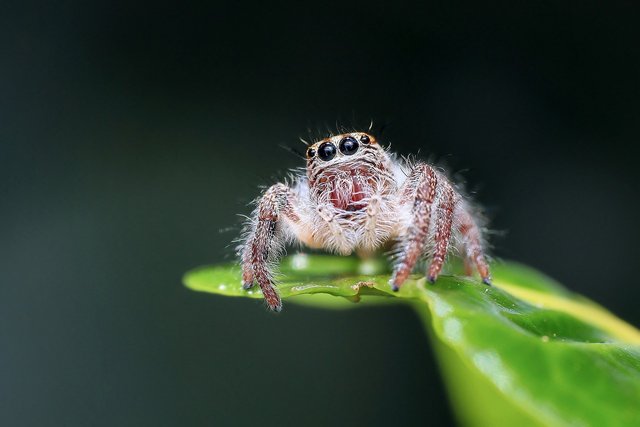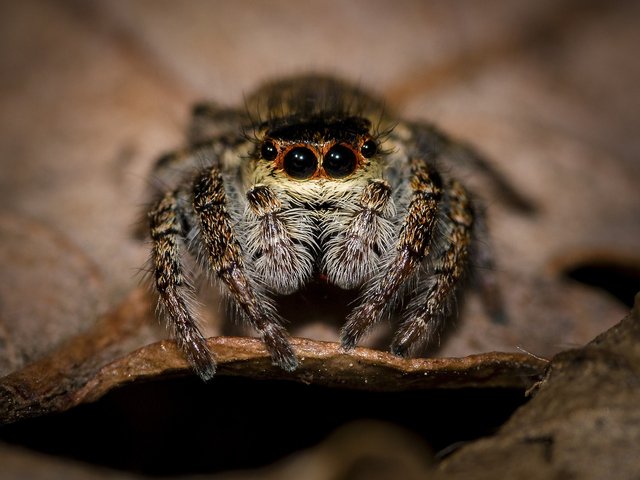
Hello all steemian friends, how are you today, I hope everyone is fine, especially to all of you in the Lakshmi community. In this post I want to discuss one animal that can be said to be a predator for insects, who else if not Spiders, I hope you like it.
Spiders are arthropod creatures belonging to the Arachnida class and the Araneae order. They are very diverse animals and are widely distributed in various habitats throughout the world, except in very cold polar regions. In general, the spider's body is divided into two main parts: the cephalothorax (head-thorax) and the abdomen. The cephalothorax is the part that unites the head and thorax, while the abdomen is usually larger and often round or oval.
Spiders are known for their characteristic of having eight legs, which makes them different from insects which only have six legs. Spiders' legs are connected to their bodies by flexible joints, allowing them to move nimbly on their webs or other surfaces. Some species of spiders have the extraordinary ability to produce thin threads called silk, which are produced from spider glands located on their abdomens. This silk has various functions, including building webs to catch prey, as a means of transportation, to wrap eggs or for communication purposes.

The types of spider webs vary greatly depending on the species. There are nets with regular patterns such as orb nets (round nets), stick nets, glue nets, and sprinkle nets. Each type of web is designed to catch prey with a certain efficiency, depending on the pattern and location of the spider's habitat.
Spiders are effective predators, generally preying on insects and other small creatures caught in their webs. They use venom to paralyze or digest their prey before consuming it. Although some species of spiders can be small, there are also species that are quite large and have a frightening appearance, such as bearded spiders or tarantulas.
Apart from their role in the food chain as predators, spiders also have an important role in the ecosystem. They help control the population of insects and other small animals, as well as enrich the soil with their organic waste. Some spider species also have symbiotic relationships with other creatures, for example with bacteria that help them digest food.
Evolutionarily, spiders have developed various adaptation strategies to survive in various environments. They can live in humid tropical rainforests, hot deserts, cold mountains, or even in urban habitats around humans. Their ability to adapt and evolve makes them one of the most successful and widespread animal groups on the planet.
Overall, spiders are a fascinating example of natural diversity and evolutionary adaptation. Although often considered scary or disgusting by some people, a deeper knowledge of spiders can help appreciate their role in ecosystems and the complexity of nature as a whole.
Thank you, I hope it can increase our knowledge, my greetings are @im-steem
Downvoting a post can decrease pending rewards and make it less visible. Common reasons:
Submit
Upvoted. Thank You for sending some of your rewards to @null. It will make Steem stronger.
Downvoting a post can decrease pending rewards and make it less visible. Common reasons:
Submit